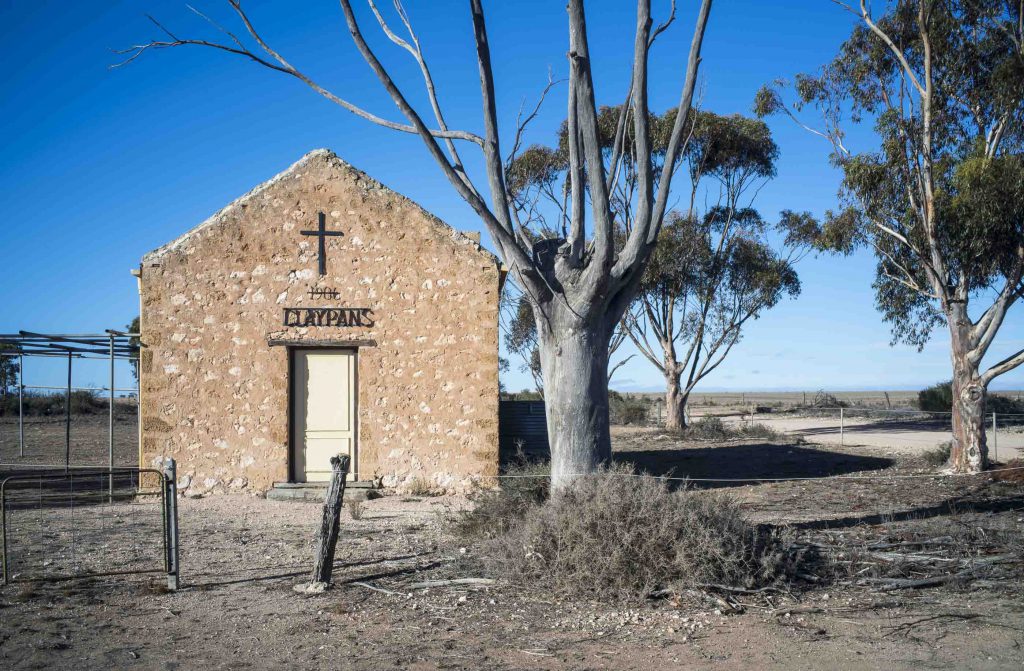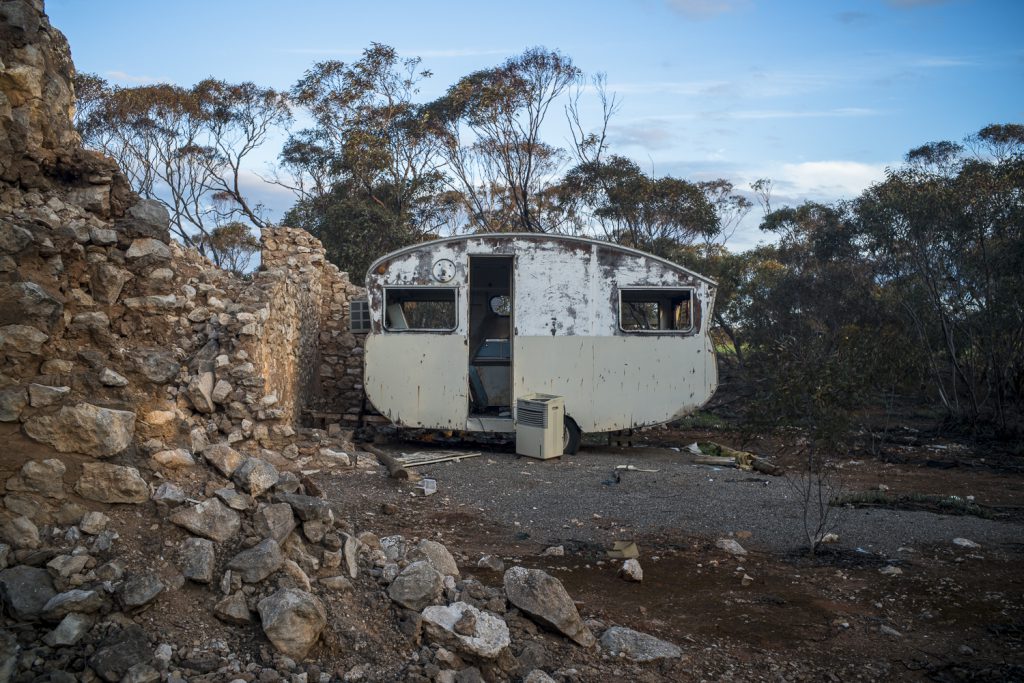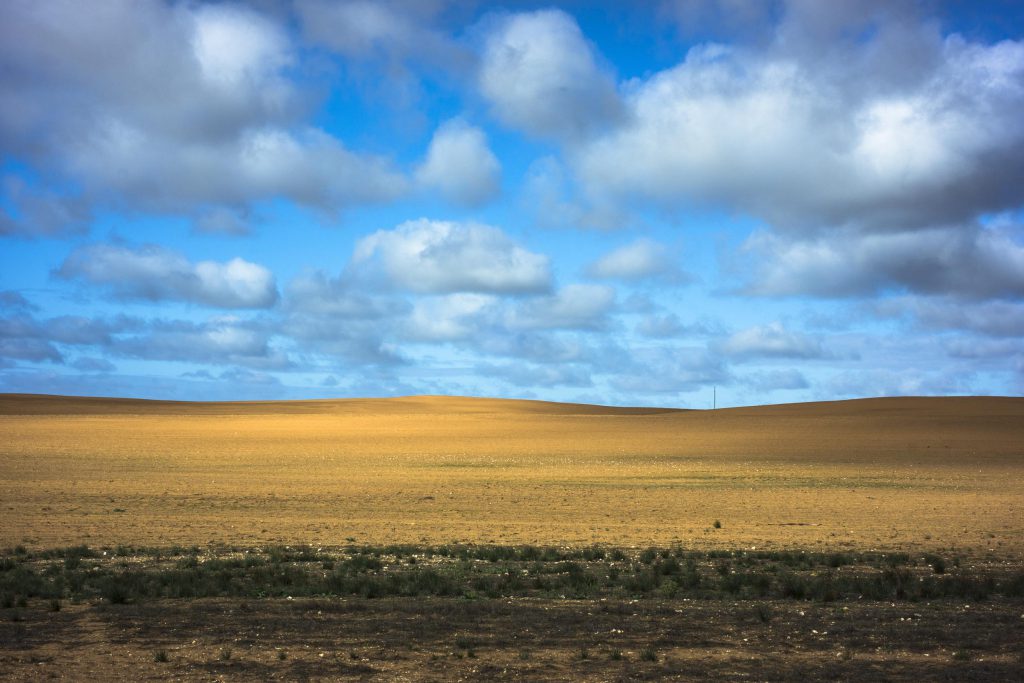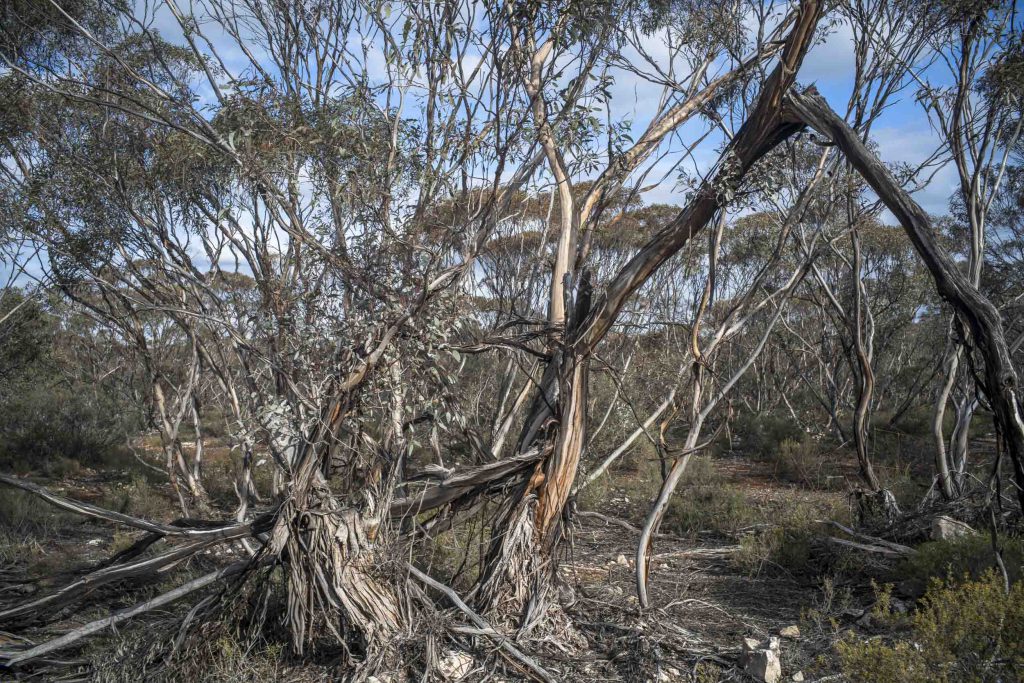In Mallee Routes, apart from an introduction and a colophon, there are 46 photographs presented as pairs in 23 double page spreads. These spreads are divided into three distinct sections or chapters: absent history, space/place and unknown futures.
After the first reading I reflect on what I have seen. For me overwhelmingly was the sense of a degraded and deserted human affected landscape. Only one, maybe two images portray a natural space devoid of human intervention. There are no people in any of the photographs. Nearly always the photographs depict the vestiges of failed human toil and a degraded land left behind.
Sauer-Thompson describes his photographic technique as being a form of the ‘snapshot ethic that are exploratory/scoping studies for the medium’. The images are straightforward documents devoid of any pictorial features. Many photographs are made in overcast lighting or dusk/dawn flat lighting stimulating a solemn emotional response in me the reader, that life has been totally sapped from the subject. Other images made in bright sunlight seem as if a dramatic spotlight has been focussed on them to emphasize the barren content of the subject matter.

In photobook design the progression of the narrative can extend through the whole book. In this book each photograph appears as a specific document with its own narrative framed by the white border of the page. Double page spreads present opportunities for a narrative movement to go from one image to the next enabling the pairing to evoke or imply a message greater than the two individual images. This is the case in the ‘Absent histories’ chapter presents a double-page spread where, in the verso image the rude stonework of a church is overshadowed by a badly polled gum tree that has died – this faces, on the recto page, a derelict 1950s caravan, window and door-less sheltering in the lee of a house’s stonewall that is now returning to a heap of rubble. For me a story is evoked and in my mind there are thoughts of the people who once lived here, confident of a future by the structures they built – but they have now gone.

In another double-page spread In the ‘Place/space’ chapter the double-page spread presents on the verso, the simplicity of an orange coloured ploughed field facing on the recto, an image of the complex nature of mallee scrub with their skirts of fallen twigs, branches and peeling bark. The message for me is a feeling of loss of the original landscape and its conversion into a naked paddock, perhaps with a short-lived future for cultivation.

Generally though for me each of Sauer-Thompson’s photographs stand alone as independent evocative statements with the overall aggregation of these statements having the ability to stimulate a powerful response in me as reader. In his forward Sauer-Thompson talks about the ‘social construction of … the mythologizing of rural battlers’.

Some who read this book might concur with that concept as they may also with Sauer-Thompson’s concluding foreword statement that the battler possesses ‘an optimism that better times are ahead: –It’ll come good again.’ However for me the reading is full of melancholy – I lament our poor stewardship of this land.
Doug Spowart, January 6, 2020


[…] On a recent visit to Melbourne I decided to go the long way — along the Mallee Highyway to Ouyen and then along the Calder Highway to Castlemaine. I camped overnight at Walpeup on the Mallee Highway and then at Castlemaine before driving onto Sunshine in Melbourne. This round about way of travelling provided me with an opportunity to photograph in the Victorian mallee. I wanted to kick start working on the next Mallee Routes photobook. […]